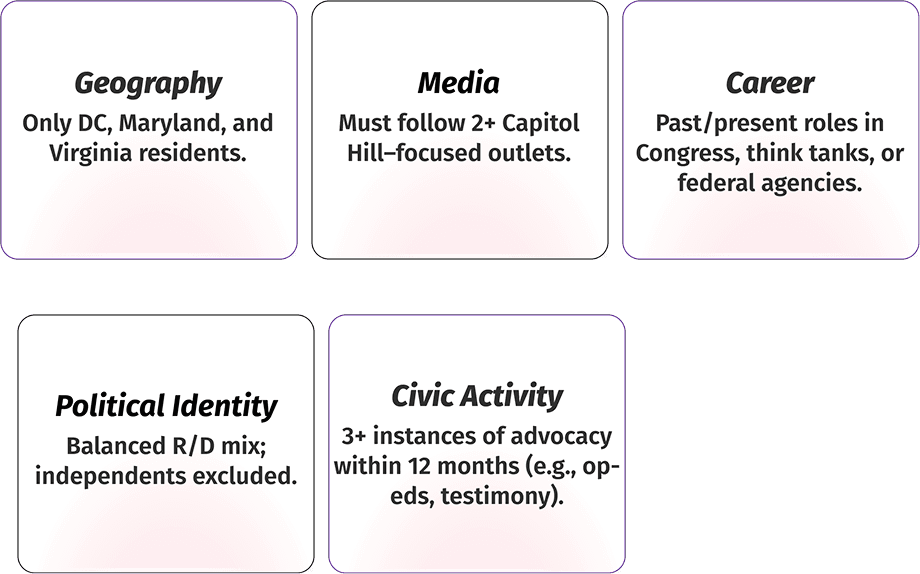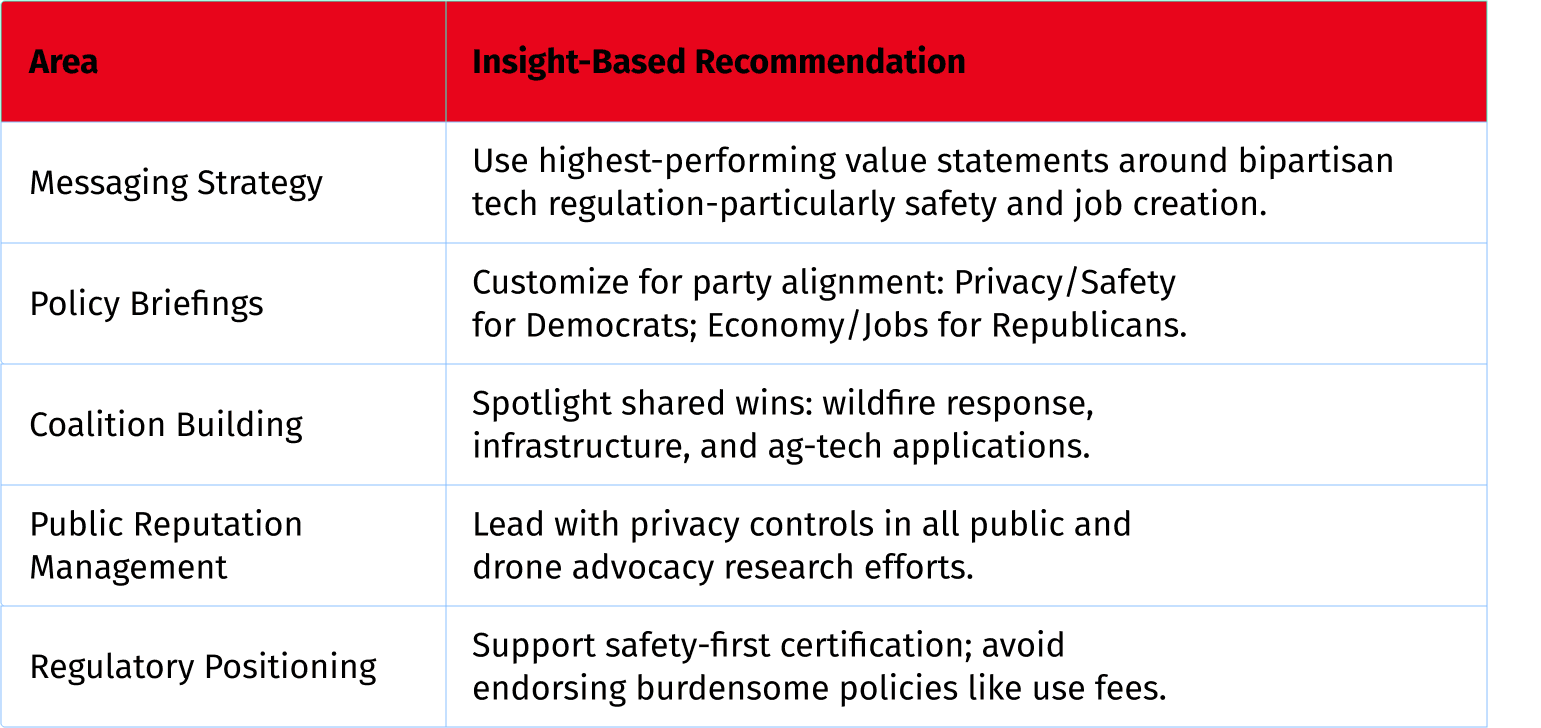Technology
Unlocking the Enterprise Buyer


As AI, drones, and autonomous vehicles become central to national conversations, a leading technology stakeholder partnered with us to understand how policy influencers view emerging technologies in the DC-MD-VA policy circles. The goal? To inform smarter drone regulation, craft compelling AI public affairs messaging, and build bipartisan coalitions around tech innovation.
This policy research aimed to:
a. Multi-Method Survey Research
We used a blended approach combining:
b. DC Influencer Segmentation
c. Behavioral & Contextual Layering
To add depth, we captured:
a. Screening & Profiling

b. Sample Framework

c. Survey Content
d. Messaging Framework – Testing 6 themes:
e. Attitudinal Shift Tracking – Before vs. after message exposure.
f. Demographic Signals – Education, race, income, activism level.
a. Message Resonance
b. Regulatory Sentiment
c. Drivers of Attitudinal Shifts
Via political sentiment analysis tools, we identified three strong correlators to increased support:

The study directly enabled:
Result: A measurable uplift in support for commercial drone deployment, stronger public affairs positioning, and enhanced readiness for upcoming debates on AI and emerging tech regulation.